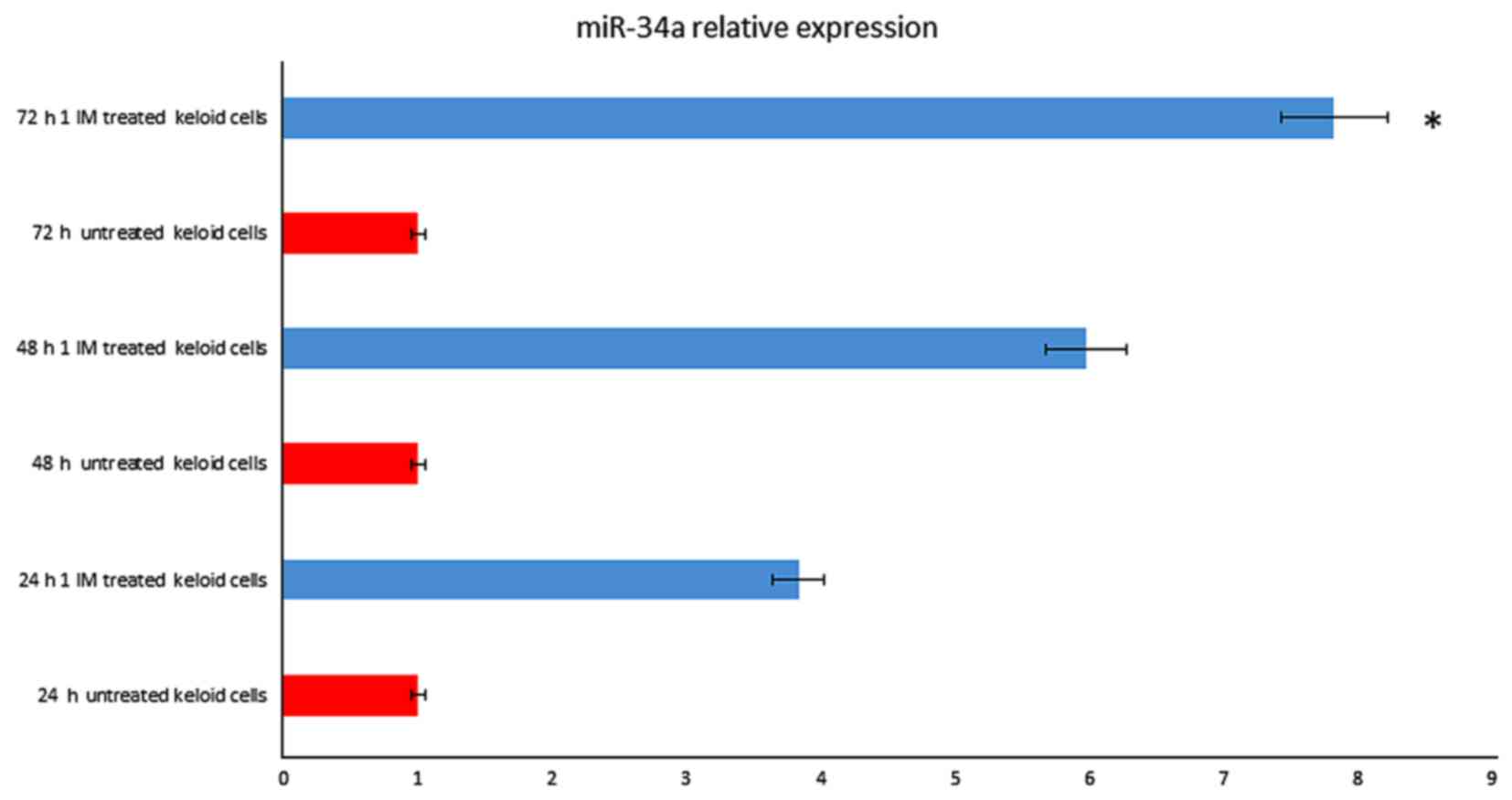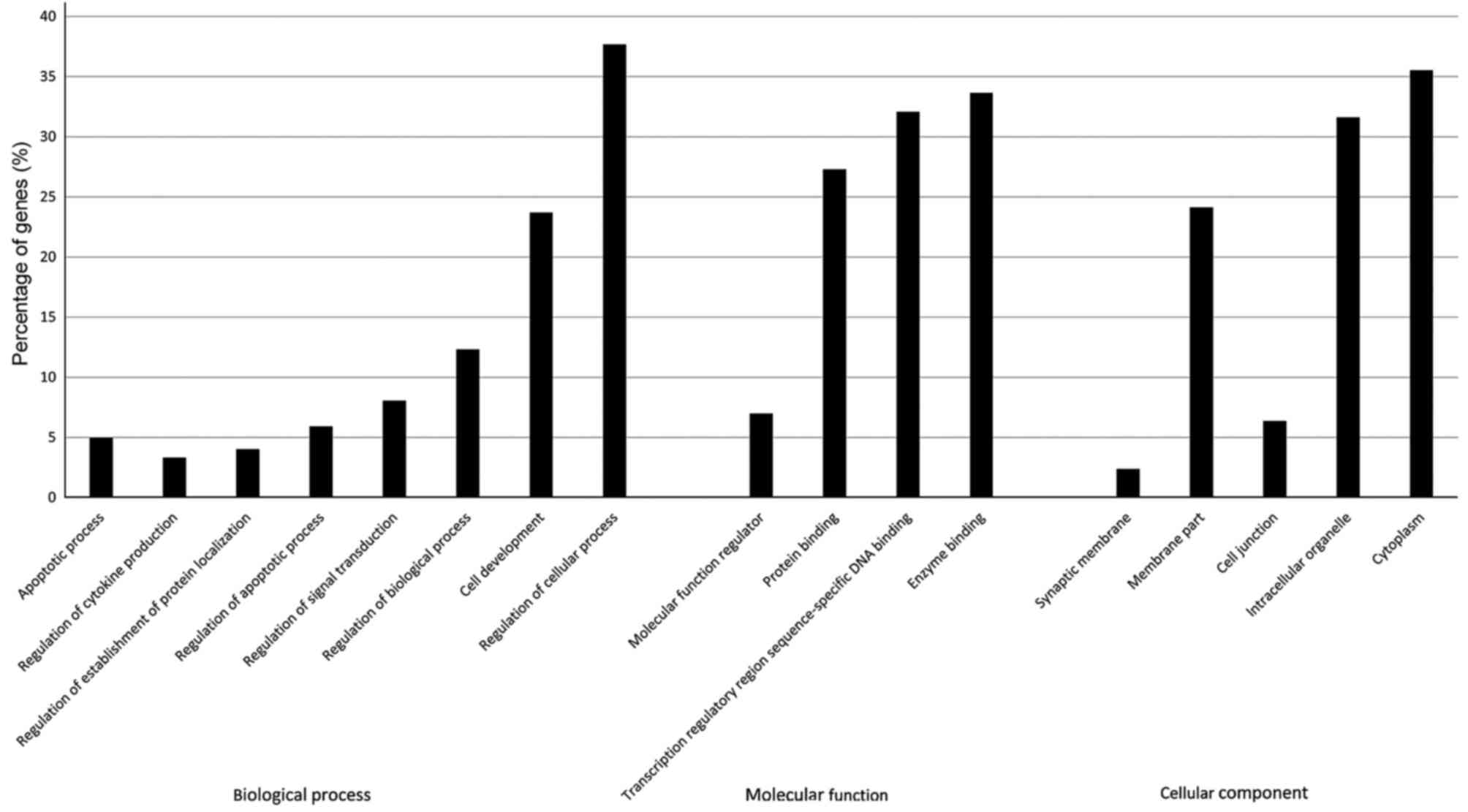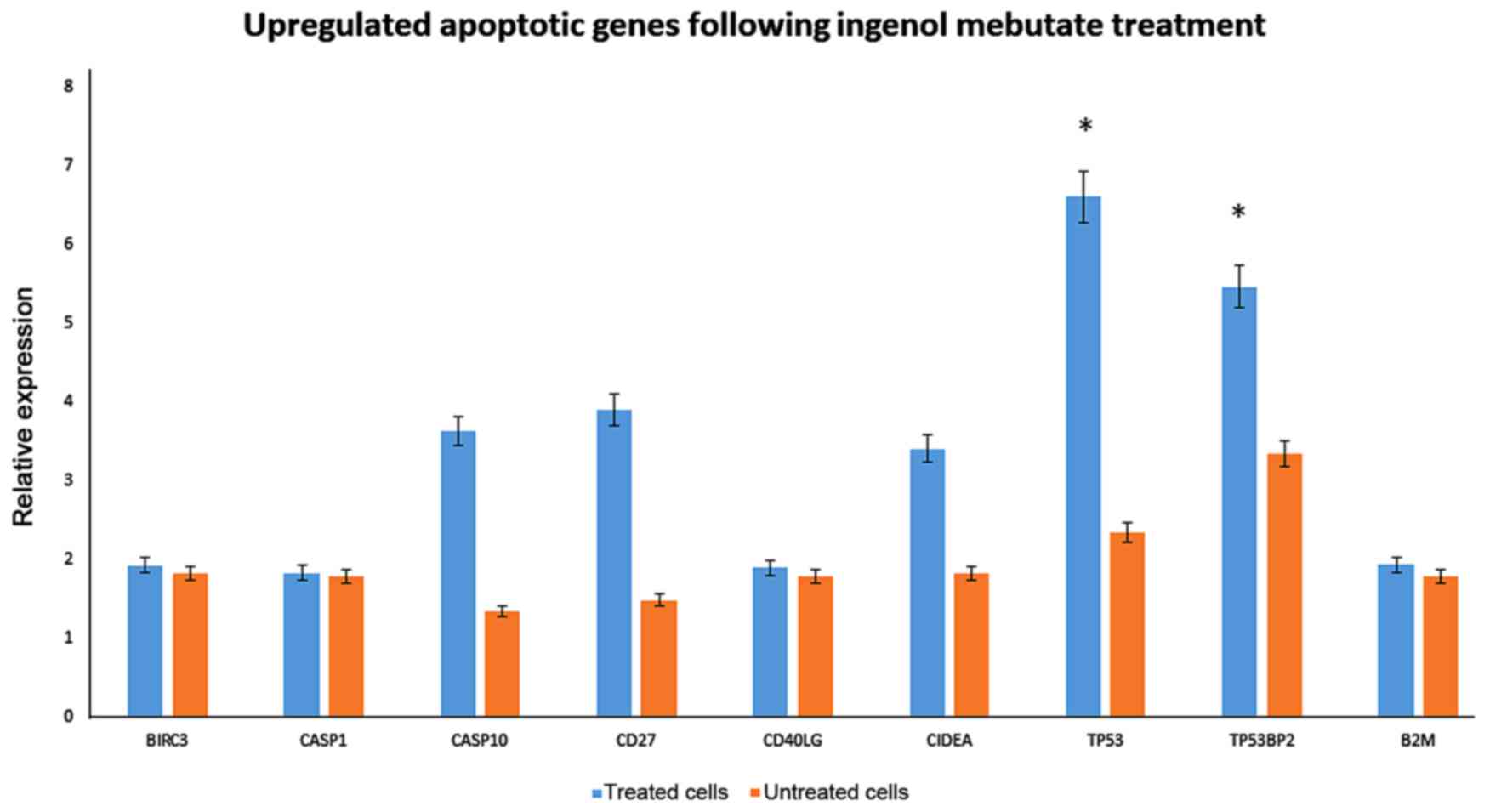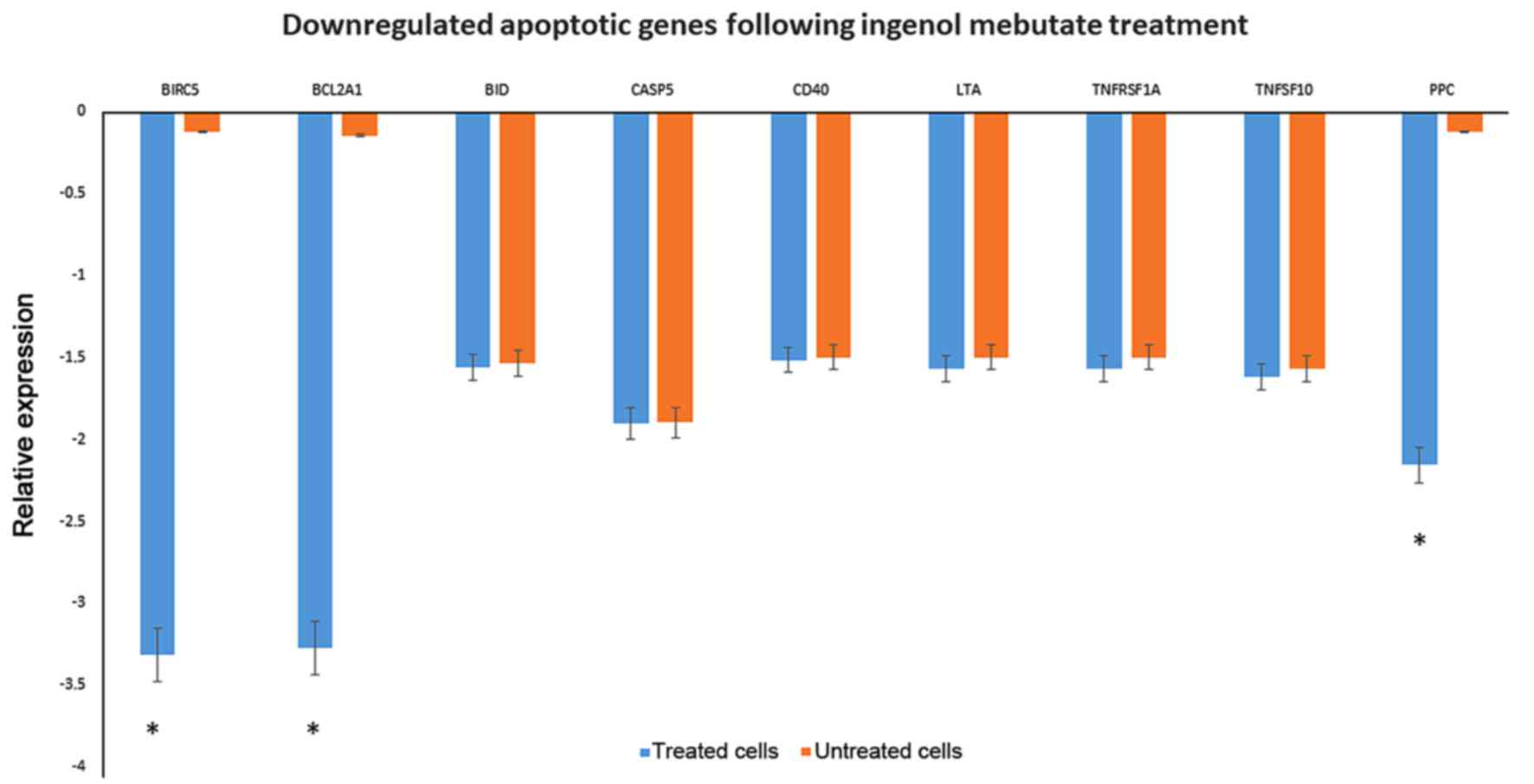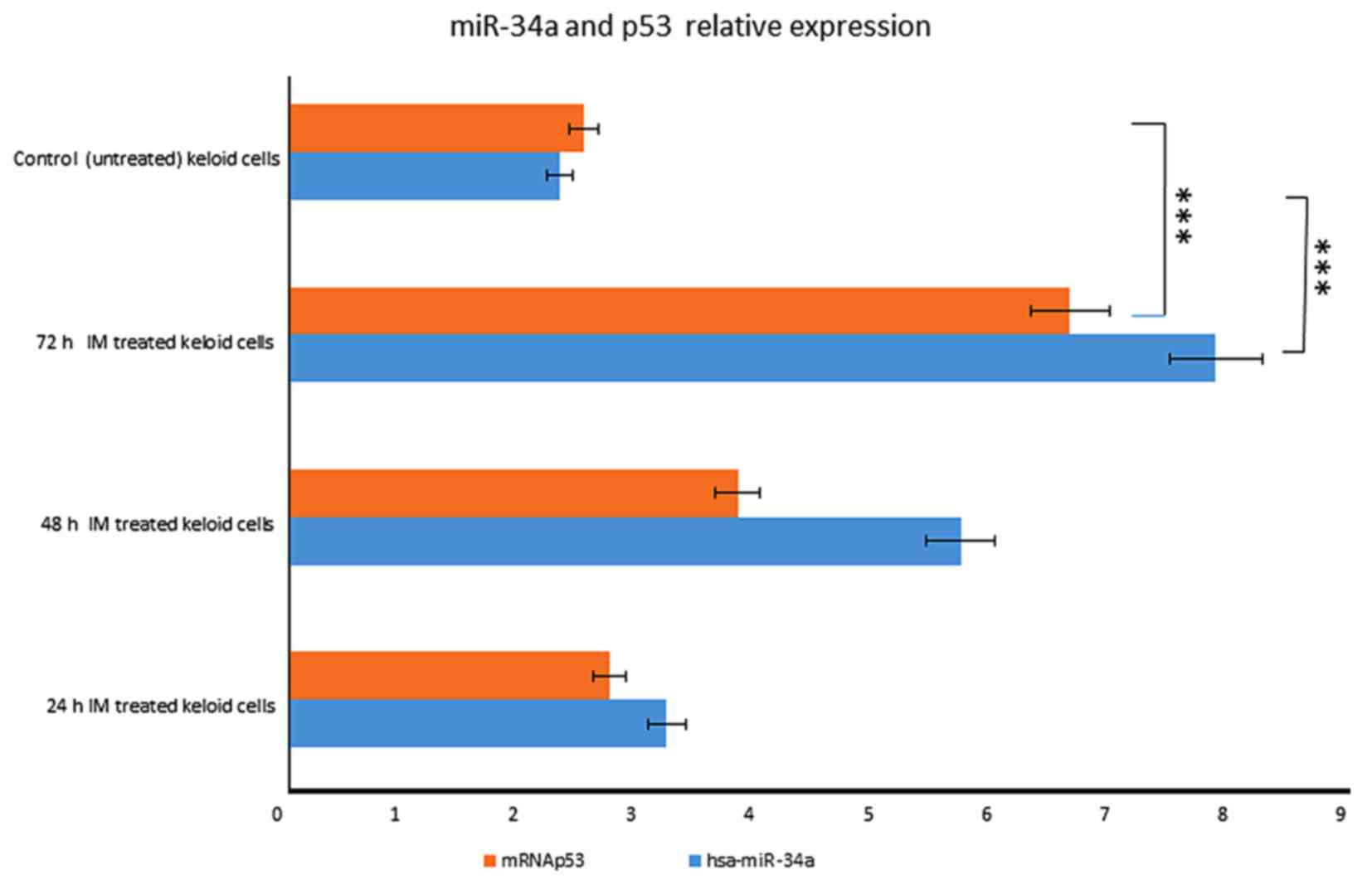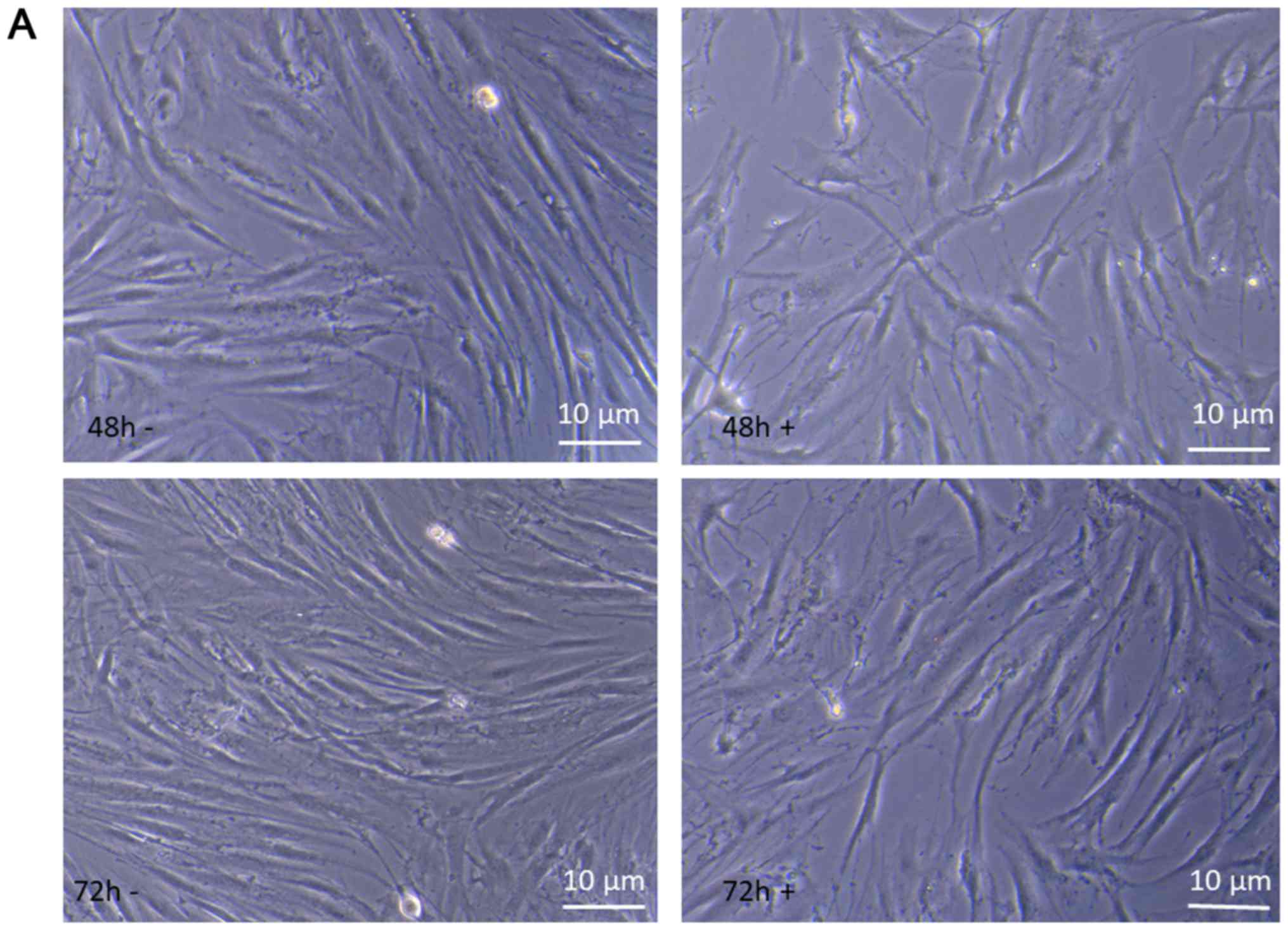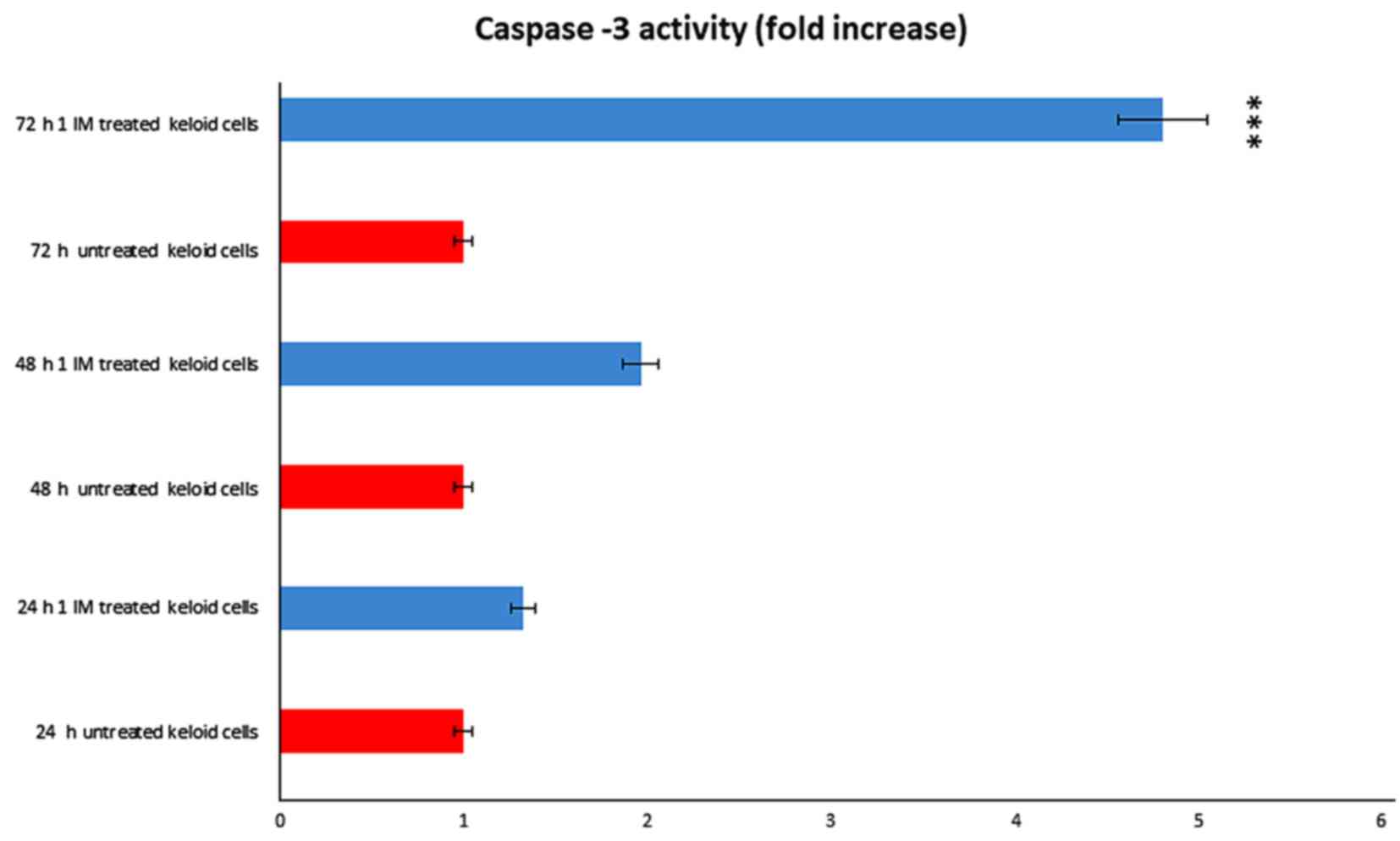miR-34 modulates apoptotic gene expression in Ingenol mebutate treated keloid fibroblasts
- Authors:
- Published online on: March 15, 2018 https://doi.org/10.3892/mmr.2018.8749
- Pages: 7081-7088
-
Copyright: © De Felice et al. This is an open access article distributed under the terms of Creative Commons Attribution License.
Metrics: Total
Views: 0 (Spandidos Publications: | PMC Statistics: )
Total PDF Downloads: 0 (Spandidos Publications: | PMC Statistics: )
Abstract
Keloids are benign skin tumors that develop in individuals who have a positive family history of keloid disorders. Keloids are characterized by a deregulated wound‑healing process, atypical fibroblasts with extreme deposition of extracellular matrix components, particularly collagen, increased cell proliferation and associated failure of apoptosis. Recently ingenol‑mebutate has been used as a novel agent with anti‑proliferative activity on human keloids as an alternative treatment option in patients, once conventional therapies have failed. We hypothesized that microRNAs (miR/miRNA) may be involved in the balance between lesion formation and repair. A comprehensive understanding of the molecular mechanism underlying the Ingenol‑mebutate response in keloid fibroblast following Ingenol‑mebutate exposure has been established previously. Therefore, the present study analyzed changes in miRNAs and apoptotic gene regulation in Ingenol‑mebutate treated keloid fibroblast, by reverse transcription‑quantitative polymerase chain reaction and a DNA fragmentation assay. The range of upregulated miRNAs and downregulated genes encoding cell death appeared to be associated with the degree of the morphological alterations in Ingenol‑mebutate treated keloids. In particular, the upregulation of miR‑34a was detected in keloid fibroblasts during and following Ingenol‑mebutate exposure. Keloid fibroblasts that overexpressed miR‑34a showed differential expression of genes involved in the apoptotic signaling pathway such as p53. In conclusion, the Ingenol‑mebutate treatment used here was effective in reducing keloid fibroblast growth in cell culture experiments and the expression of particular miRNAs modulated the pro‑apoptotic gene expression following Ingenol-mebutate treatment.



